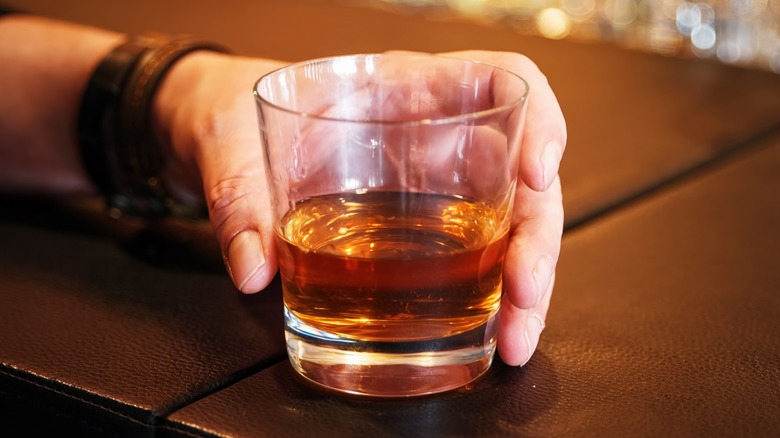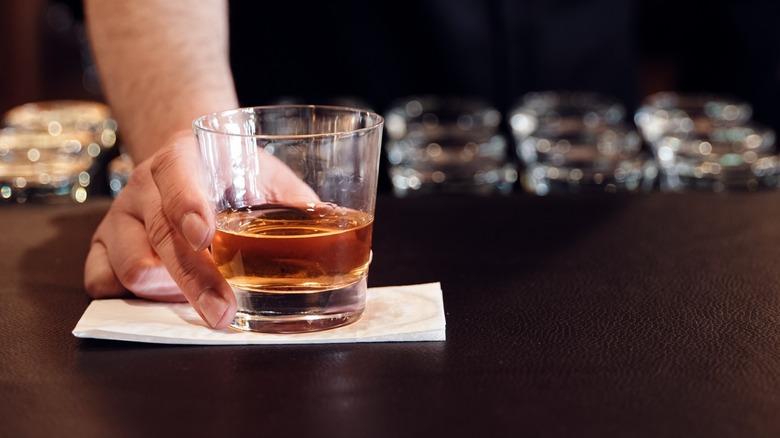Don't Swirl Your Bourbon If You're Trying To Taste It Like A Pro
Bourbon isn't just about sipping; enjoying a glass is an experience that engages all the senses. One of the most crucial aspects of savoring this iconic American spirit is the act of smelling it before indulging in a sip, known as nosing. However, bourbon should not be swirled prior to sniffing. Unlike wine, where swishing is encouraged to aerate the liquid, bourbon should not be mixed vigorously in your glass. The reason lies in the spirit's alcohol content.
Bourbon typically has a higher percent alcohol by volume (ABV) than wine, which means that its volatile compounds are more sensitive to exposure to air. Aggressive swirling can lead to excessive aeration, causing the alcohol vapors to overpower the subtler aromas, effectively muting the drink's bouquet. Instead, gentle tilting of the glass or a slow, controlled rotation is recommended to allow for aeration without compromising the aromatic nuances.
So, why is nosing so important? The olfactory senses play a pivotal role in our overall tasting experience. Smelling bourbon before you taste it allows you to gather a wealth of information about its character, complexity, and flavor profile. The scents that waft from the glass offer clues about the distillation process, aging, and the unique blend of grains used to create the spirit.
How to properly nose bourbon
To fully appreciate the complexities of bourbon, try smelling it with both your mouth open and closed before tasting it. This may sound counterintuitive, but it can significantly change your perception of the spirit's nose. Begin by taking a gentle sniff of the bourbon with your mouth closed. This helps you identify the more subtle scents, as it restricts airflow and allows for a concentrated aroma. Now, take another sniff with your mouth slightly open. This allows for a broader range of aromas to reach your olfactory receptors.
You'll notice that certain notes become more pronounced, revealing additional layers of complexity. When you bring the glass to your nose, take a moment to savor the various aromas. Bourbon's aging in charred oak barrels imparts delightful vanilla undertones to the spirit. This sweet and creamy scent is a hallmark of quality bourbon. The caramel notes in bourbon are often a result of the caramelization that occurs during the aging process. You'll find these notes to be rich and inviting.
Bourbon has many unique tasting notes, which are often first detected by the nose. It frequently boasts a medley of spices like cinnamon, clove, and nutmeg. These warm, aromatic scents can add depth and complexity to both the aroma and flavor. Depending on the bourbon, you may also detect hints of dried fruit, apple, or even floral notes. These can add a pleasant brightness to the overall bouquet and sipping experience. So, next time you pour yourself a glass of bourbon, take a moment to savor the nose — it's a prelude to a delightful tasting experience.

